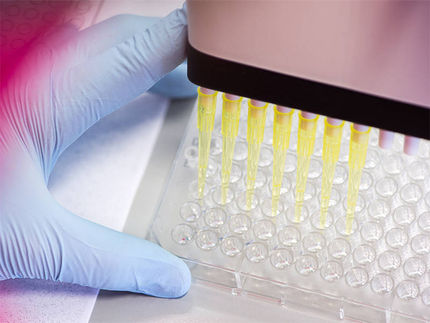Amersham: New study using Ettan DIGE technology reveals significant results
A new study published in Proteomics1 shows that two-dimensional difference gel electrophoresis (2-D DIGE) technology provided by Amersham Biosciences, the life sciences business of Amersham, reveals statistically significant differences in protein abundance between normal and colorectal cancer samples that would not have been easily detected using classic 2-D gel separation.
Ettan DIGE technology from Amersham Biosciences has significant benefits over classic 2-D electrophoresis, providing a very sensitive and accurate method for measuring differences in protein expression.
Researchers at Vanderbilt University Medical Center, including members of the GI SPORE, used 2-D DIGE coupled with mass spectrometry to investigate differences in protein expression between human colorectal cancers and normal mucosa. Cy5-labeled proteins isolated from the tumor tissue of six patients and Cy3-labeled proteins isolated from adjacent normal mucosa were mixed together and then separated on the same 2-D gel along with a Cy2-labeled mixture of all the samples. Comparison with the mixed sample internal standard enabled protein abundance in the tumor and normal samples to be inter-compared among six patients without interference from gel-to gel variation. Mass spectrometry and database interrogation were then used to identify those proteins that had a consistently different abundance in the tumor and normal samples
Using this method, 52 unique proteins were identified that had a statistically significantly difference in abundance between tumor and normal samples. For 42 of these 52 proteins, the use of DIGE technology with a mixed sample internal standard enabled detection of protein abundance changes that would not have been evident if the Cy3-labelled and Cy5-labelled proteins from each patient had been compared separately.
"Identifying proteins that differ in abundance between normal and tumor samples may provide insight into critical events in cancer progression, or reveal proteins with potential value as therapeutic targets," said Dr David Friedman, the study's lead investigator. "DIGE technology with a mixed sample internal standard enables us to find differences in protein abundance that would otherwise be overlooked due to the large degree of variation inherent between normal and tumor samples."
Other news from the department business & finance
Most read news
More news from our other portals
See the theme worlds for related content
Topic World Mass Spectrometry
Mass spectrometry enables us to detect and identify molecules and reveal their structure. Whether in chemistry, biochemistry or forensics - mass spectrometry opens up unexpected insights into the composition of our world. Immerse yourself in the fascinating world of mass spectrometry!

Topic World Mass Spectrometry
Mass spectrometry enables us to detect and identify molecules and reveal their structure. Whether in chemistry, biochemistry or forensics - mass spectrometry opens up unexpected insights into the composition of our world. Immerse yourself in the fascinating world of mass spectrometry!





















































